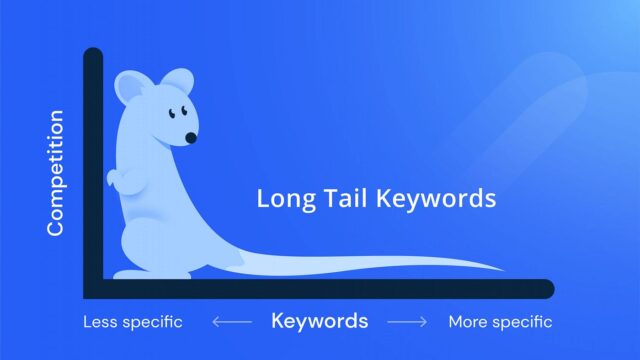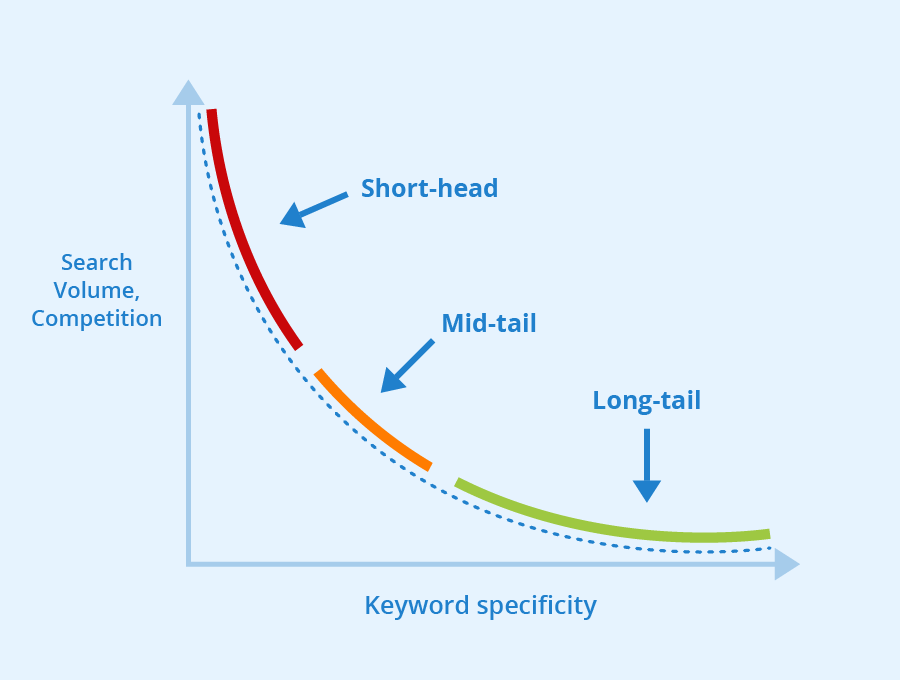In the ever-evolving landscape of search engine optimization (SEO), businesses continually seek effective strategies to enhance their online visibility and attract relevant traffic. While short-tail keywords—those typically comprising one or two words—have traditionally been the focus of many SEO campaigns, long-tail keywords are gaining significant traction. Understanding and leveraging long-tail keywords can play a pivotal role in an effective SEO strategy. In this blog, we’ll explore what long-tail keywords are, their importance, and how to incorporate them into your SEO efforts.

Table of Contents
ToggleWhat Are Long-Tail Keywords?
Long-tail keywords are phrases that are usually longer than three words and are more specific than short-tail keywords. For example, while “running shoes” is a short-tail keyword, a long-tail variant would be “best running shoes for flat feet.” These keywords tend to have lower search volume but higher intent, meaning that users searching for these phrases are often closer to making a purchase decision.
The Importance of Long-Tail Keywords
- Less Competition
- Niche Targeting: Long-tail keywords typically face less competition than broader keywords, making it easier for smaller or newer websites to rank higher in search results. Focusing on these keywords allows businesses to carve out a niche in their market and attract targeted traffic.
- Higher Conversion Rates
- Intent-Driven Searches: Users who search for long-tail keywords often have specific needs or questions in mind, making them more likely to convert. For instance, someone searching for “eco-friendly yoga mats” is further along in the buyer’s journey than someone simply searching for “yoga mats,” leading to higher chances of purchase.
- Improved Relevance
- Targeted Content Creation: Long-tail keywords allow businesses to create highly relevant content that speaks directly to the needs and interests of their audience. By aligning content with specific queries, businesses can enhance user experience and engagement.
- Voice Search Optimization
- Natural Language Queries: With the rise of voice-activated search technology, users are increasingly using natural language in their queries. Long-tail keywords align well with this trend, as they often mirror the conversational phrases people use when speaking.
How to Identify Long-Tail Keywords
To effectively incorporate long-tail keywords into your SEO strategy, you need to identify the right phrases. Here are some strategies to find valuable long-tail keywords:
- Keyword Research Tools
- Utilize tools like Google Keyword Planner, Ahrefs, SEMrush, and Ubersuggest to find long-tail keyword suggestions based on your primary keywords. These tools often provide data on search volume, competition, and related queries.
- Google Autocomplete
- Start typing your primary keyword into Google’s search bar and observe the autocomplete suggestions. These suggestions are often popular long-tail keywords that users frequently search for.
- Related Searches
- After performing a search, scroll to the bottom of the Google results page to find related searches. These phrases can provide additional long-tail keyword ideas.
- Competitor Analysis
- Analyze the content and keywords that competitors rank for using tools like Moz or SpyFu. This can provide insights into long-tail keywords you might have overlooked.
Incorporating Long-Tail Keywords into Your SEO Strategy
Once you’ve identified relevant long-tail keywords, here are some best practices for incorporating them into your SEO strategy:
- Create High-Quality Content
- Develop content that addresses the specific needs or questions related to your long-tail keywords. This could include blog posts, product descriptions, FAQs, or how-to guides. Ensure your content is informative, engaging, and well-structured.
- Optimize On-Page SEO
- Use long-tail keywords naturally within your on-page SEO elements, including:
- Title Tags: Incorporate the long-tail keyword into your title.
- Meta Descriptions: Use the keyword in the meta description to enhance click-through rates.
- Headings: Use long-tail keywords in your headings and subheadings (H1, H2, etc.) to improve content organization and relevance.
- Image Alt Text: Optimize images with relevant long-tail keywords to enhance image search visibility.
- Use long-tail keywords naturally within your on-page SEO elements, including:
- Utilize Internal and External Links
- Link to relevant internal content that provides more information on the long-tail keywords. Additionally, seek opportunities for guest posting or partnerships that allow you to earn external backlinks using your targeted phrases.
- Monitor Performance
- Use tools like Google Analytics and Search Console to track the performance of your long-tail keywords. Monitor metrics such as organic traffic, bounce rates, and conversion rates to assess effectiveness and make necessary adjustments.
- Stay Updated on Trends
- SEO is a dynamic field. Keep an eye on changing trends and adjust your long-tail keyword strategy accordingly. Regularly update your content to ensure it remains relevant and valuable to users.
Conclusion
Long-tail keywords play a crucial role in any comprehensive SEO strategy. By focusing on these specific phrases, businesses can target niche audiences, improve conversion rates, and enhance overall user experience. The combination of lower competition and higher intent makes long-tail keywords a valuable asset for attracting qualified traffic. As you develop your SEO strategy, be sure to integrate long-tail keywords into your content and optimization efforts for maximum impact.


No responses yet